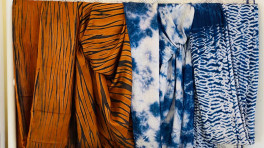Danish artist sends blank frames for $84k to museum, says 'it's art'
"I have chosen to make a new work for the exhibition, instead of showing the two 14- and 11-year-old works respectively," Haaning told the museum in an email, the text of which is now displayed next to the empty frames

A Danish artist Jens Haaning, who was given the equivalent of nearly $84,000 in Danish kroner and euro banknotes to produce an artwork by the Kunsten Museum of Modern Art in Aalborg, presented two empty canvases — titled "Take the Money and Run."

He was commissioned to replicate two of his previous artworks, which included banknotes connected to a canvas reflecting the average annual wage in Denmark and Austria, for the exhibition "Work It Out," which opened on September 24, reports CNN.
The institution not only loaned him the notes, but also awarded him 25,000 kroner ($3,900) for his efforts.
But when the Kunsten Museum of Modern Art in Aalborg took delivery of the recreated artworks ahead of the show, gallery staff made a surprising discovery: the frames were empty.
Rather than being the handiwork of thieves, the loaned cash was missing thanks to Haaning himself, who says he is keeping the money -- in the name of art.
According to the museum, Haaning has breached the agreement on how the money would be used.
However, it has not yet been decided whether or not to report Haaning to the police if the money is not returned by the end of the show in January.
Haaning, on the other hand, denies committing a crime and claims to have created a work of art simply by handing in blank pieces of art.
"I have chosen to make a new work for the exhibition, instead of showing the two 14- and 11-year-old works respectively," Haaning told the museum in an email, the text of which is now displayed next to the empty frames.
"The work is based on/responds to both your exhibition concept and the works that we had originally planned to show."
The "new" conceptual piece, which Haaning has titled "Take the Money and Run," is now at the centre of a dispute between museum and artist over labor, contractual obligations and the value of work -- all fitting themes for the exhibition.
"I saw, from my artistic point of view, that I could create a much better piece for them than what they could imagine," Haaning told CNN over the phone, adding: "I don't see that I have stolen money... I have created an art piece, which is maybe 10 or 100 times better than what we had planned. What is the problem?"


 Keep updated, follow The Business Standard's Google news channel
Keep updated, follow The Business Standard's Google news channel
















